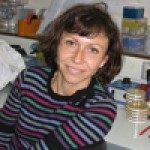Link to Pubmed [PMID] – 34781750
Link to DOI – 10.1128/mBio.02425-21
mBio 2021 12; 12(6): e0242521
Building iron-sulfur (Fe-S) clusters and assembling Fe-S proteins are essential actions for life on Earth. The three processes that sustain life, photosynthesis, nitrogen fixation, and respiration, require Fe-S proteins. Genes coding for Fe-S proteins can be found in nearly every sequenced genome. Fe-S proteins have a wide variety of functions, and therefore, defective assembly of Fe-S proteins results in cell death or global metabolic defects. Compared to alternative essential cellular processes, there is less known about Fe-S cluster synthesis and Fe-S protein maturation. Moreover, new factors involved in Fe-S protein assembly continue to be discovered. These facts highlight the growing need to develop a deeper biological understanding of Fe-S cluster synthesis, holo-protein maturation, and Fe-S cluster repair. Here, we outline bacterial strategies used to assemble Fe-S proteins and the genetic regulation of these processes. We focus on recent and relevant findings and discuss future directions, including the proposal of using Fe-S protein assembly as an antipathogen target.


